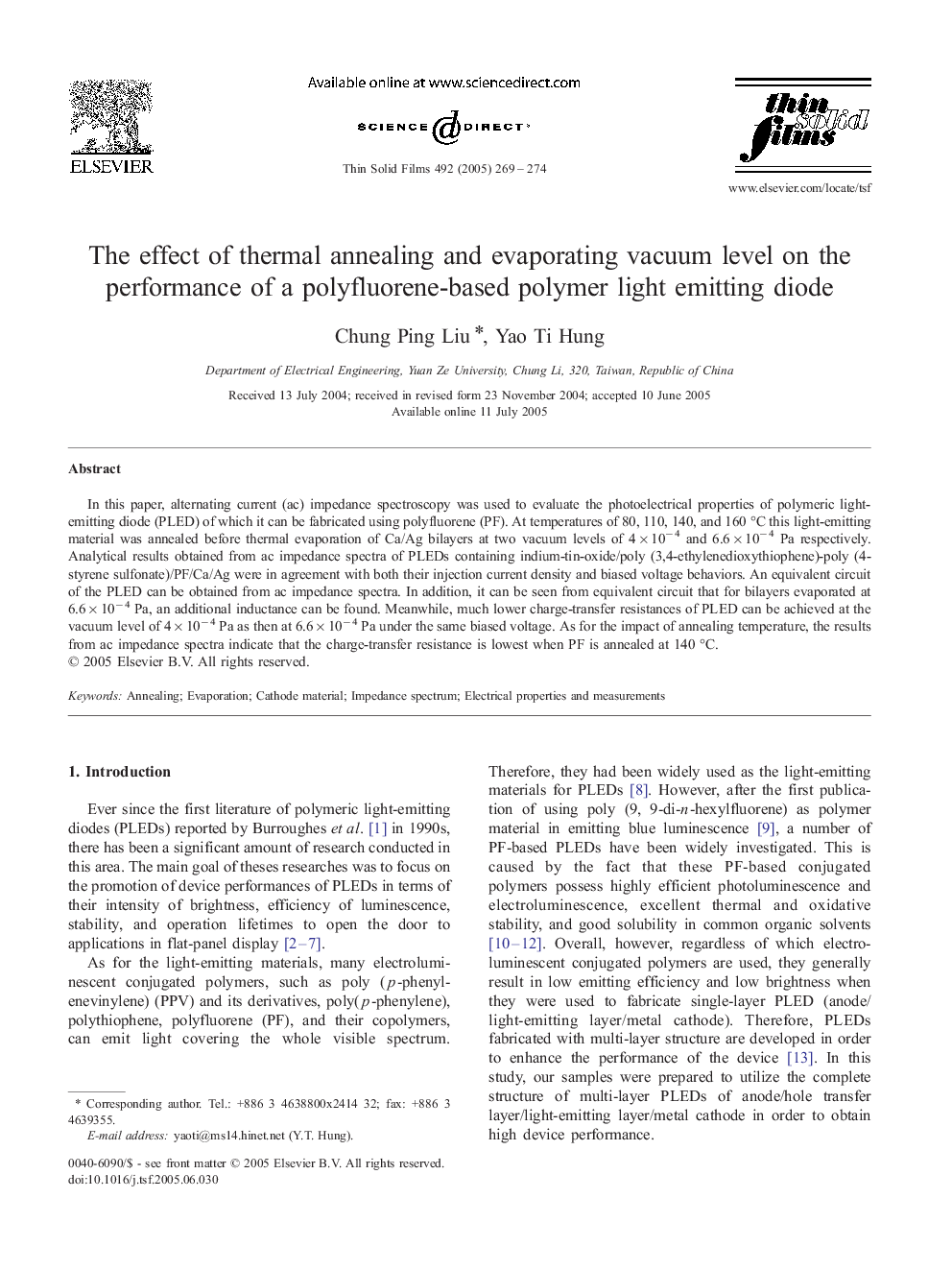| Article ID | Journal | Published Year | Pages | File Type |
|---|---|---|---|---|
| 9812151 | Thin Solid Films | 2005 | 6 Pages |
Abstract
In this paper, alternating current (ac) impedance spectroscopy was used to evaluate the photoelectrical properties of polymeric light-emitting diode (PLED) of which it can be fabricated using polyfluorene (PF). At temperatures of 80, 110, 140, and 160 °C this light-emitting material was annealed before thermal evaporation of Ca/Ag bilayers at two vacuum levels of 4 Ã 10â 4 and 6.6 Ã 10â 4 Pa respectively. Analytical results obtained from ac impedance spectra of PLEDs containing indium-tin-oxide/poly (3,4-ethylenedioxythiophene)-poly (4-styrene sulfonate)/PF/Ca/Ag were in agreement with both their injection current density and biased voltage behaviors. An equivalent circuit of the PLED can be obtained from ac impedance spectra. In addition, it can be seen from equivalent circuit that for bilayers evaporated at 6.6 Ã 10â 4 Pa, an additional inductance can be found. Meanwhile, much lower charge-transfer resistances of PLED can be achieved at the vacuum level of 4 Ã 10â 4 Pa as then at 6.6 Ã 10â 4 Pa under the same biased voltage. As for the impact of annealing temperature, the results from ac impedance spectra indicate that the charge-transfer resistance is lowest when PF is annealed at 140 °C.
Related Topics
Physical Sciences and Engineering
Materials Science
Nanotechnology
Authors
Liu Chung Ping, Hung Yao Ti,
